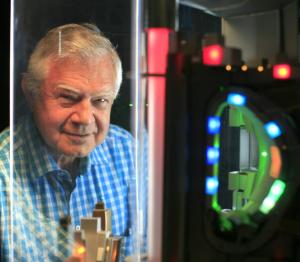Decisive steps ahead
Over the coming months, with the STAC, MAC and finally the Council meeting approaching, we will take some decisive steps for the future of the project. The Fusion Science & Technology Department, like everyone else in the house, is very much engaged in rewriting and restructuring the Baseline documentation, the master documents describing the "making of" ITER. But at the same time we are continuing our efforts to optimize the machine's performance.
The methods developed to control Edge Localized Modes (ELM), for example—additional coils and pellet pacing—are promising, but to be used in ITER the technologies applied need further development and the physics understanding needs further improvement. ELM control coils have recently been installed in several tokamaks around the world with ambiguous results. The experiments performed on the US machine DIII-D delivered promising data, but the results received from other machines were less satisfying. ELM coils will now be implemented in ASDEX Upgrade in Germany and we are curious to see the results. In November, another important experimental campaign will commence, again on DIII-D, in order to increase our knowledge of the interaction of Test Blanket Modules and the H-mode plasma. The modules developed to breed tritium, the fusion fuel, are basically made of ferromagnetic steel. They are to be located in ports very close to the plasma. Inside the modules, magnetic moments will align and amplify the external field, but outside the modules their own field will be opposite to the external toroidal field and this will decrease the toroidal field in front of the ports. The field at this location is already at a minima, amplifying the already existing toroidal field ripple. Preliminary data from JET indicate that the quality of H-mode confinement is very sensitive to the value of toroidal field ripple. However, JET experiments are rather far from ITER conditions. To obtain a better understanding, a dedicated set of experiments modelling the TBM/plasma interaction in ITER will be performed on the US machine for ten days starting from 9 November.
And last but not least, some words on the status of the plasma control system, one of the keys to the successful operation of ITER. Current experiments increasingly use feedback control to improve their performance, and ITER must go in the same direction. This system will orchestrate all parts of the tokamak during a pulse to make sure that the discharge is successful. It relies on information from ITER diagnostics and will send signals to various actuators—for instance heating and current drive systems, fuelling, magnetic coils—to ensure that the plasma behaves the way we want it to. This requires a collaborative effort from the CODAC Division, who will provide the infrastructure and plant control, and the Fusion Science & Technology Department which is in charge of the plasma control architecture, control algorithms and the plasma modelling.
The progressive development of superfast computers adds an interesting touch to this topic. As technology and computing power advance, so do the demands on plasma control. Access to high-power computing makes the incorporation of simulation tools into real-time plasma control possible. In many cases modelling of processes in the plasma and the reconstruction of plasma parameters from experimental data can be accomplished more quickly than real processes in the ITER plasma. This will enable much better control of the plasma regimes than can be achieved now. Higher plasma parameters may be achieved and dangerous conditions predicted and avoided. ITER will be able to have very long pulses and may run several experiments during one pulse. Proper feedback control is absolutely essential to be able to use this opportunity. To assemble existing experience in this area and to attract the fusion community to this development, a workshop on plasma control will be organized by ITER in December.


